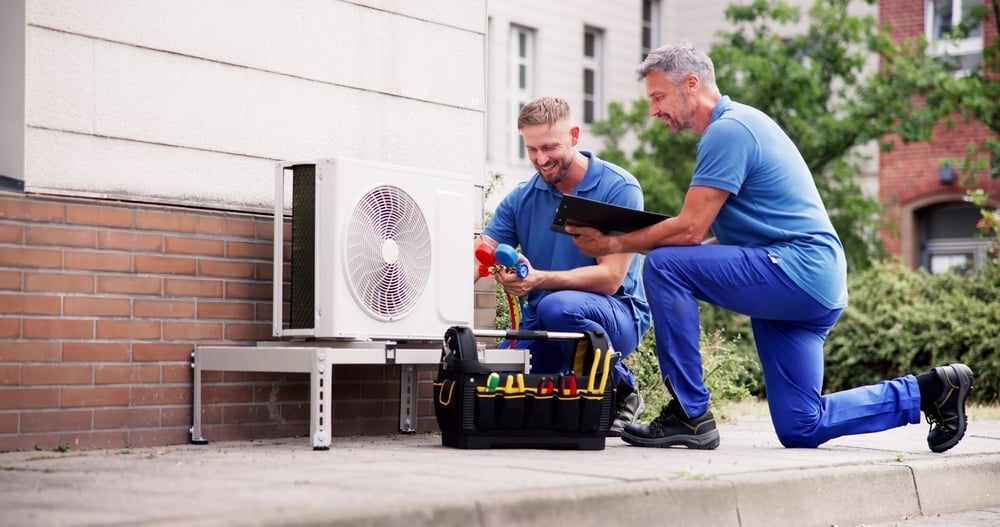What Makes an HVAC Business Sellable? Understanding the Value Triangle
In recent years, the HVAC sector has attracted strong interest from private equity groups and strategic acquirers. Home services—particularly heating, ventilation, and air conditioning—represent an appealing mix of recurring demand and operational scalability. Yet despite this rising demand, not all HVAC businesses are created equal in the eyes of buyers.
So, what differentiates a company that sells for a strong multiple from one that doesn’t?
The answer often lies in what we refer to as the Value Triangle.
The Value Triangle: Three Pillars of HVAC Business Value
Think of the Value Triangle as a framework for understanding what drives premium valuations. It consists of three key components:
- Historical Profitability
- Operational Maturity: People and Processes
- Growth Potential
These aren’t just abstract ideas. They’re practical indicators of how transferable, scalable, and sustainable your business is; three qualities buyers place a high premium on.
1. Historical Profitability: Recurring Service Revenue Wins
In HVAC, new construction revenue can be highly cyclical, subject to interest rates, housing trends, and material costs. Service and maintenance revenue, by contrast, is both recurring and resilient. If a furnace or air conditioner breaks, it needs to be fixed or replaced, regardless of market cycles.
Moreover, regulatory changes have shortened the average lifespan of HVAC systems. Today’s equipment, packed with electronics, often requires replacement within 6–8 years. That creates predictable replacement cycles and in turn, more consistent cash flow.
For buyers, this predictability translates to lower risk and higher value.
2. People and Processes: Creating a Business That Runs Without You
When buyers evaluate an HVAC business, they’re not just looking at trucks or customer lists. They’re buying an operational model and the team behind it.
The most valuable businesses are those that operate independently of the owner. Key questions include:
- Are technicians properly trained?
- Are processes clearly documented?
- Is there a capable leadership team in place?
The goal is a business that can scale. Investors are drawn to companies with repeatable systems they can deploy across new territories. If your operations are well-documented and your team is empowered, you’ve built something that can grow, and that’s highly attractive to buyers.
3. Growth Potential: Expanding Beyond a Single-Service Model
Many HVAC companies focus solely on heating and cooling. While that’s a solid core, buyers often look for platforms—companies they can expand. That might mean adding plumbing, electrical, or smart-home services. It could also mean entering new geographic markets or modernizing marketing and CRM tools.
A diversified service offering makes your company more resilient and more valuable. Think of it this way: a single-blade pocketknife has utility, but a full toolkit is far more powerful.
Preparing for Sale: Three High-Impact Strategies
If a sale is in your future, whether in one year or five, there are clear steps you can take now to position your HVAC business for maximum value:
- Shift Toward Service Revenue
Recurring service contracts and replacement work generate reliable margins. If your business still leans heavily on new construction, begin rebalancing your revenue mix. - Document and Delegate
Start building a playbook. Create standard operating procedures and train your management team to handle daily decisions. A business that runs well without the owner is worth more to a buyer. - Expand Thoughtfully
Look for adjacent services that your customer base already needs. One HVAC owner in Texas added solar installation services and saw EBITDA double in three years; a powerful illustration of growth potential done right.
Case Study: Building Value in the Midwest
Take Mike, a Midwest HVAC owner. He pivoted his business from construction to maintenance-first, added duct cleaning and smart thermostats, and invested in leadership development. When it came time to sell, he secured a sale at a 30% premium over local market averages and retained an equity position in the acquiring firm’s platform.
Final Thought: Build for Transferability
Ultimately, a valuable HVAC business is one that’s stable, scalable, and built to last. The Value Triangle isn’t just a theory; it’s a practical guide for building a company that buyers want to own. So ask yourself: if you stepped away tomorrow, would your business keep running, or keep growing? The more confidently you can answer yes, the more valuable your company becomes.
At Breneman Advisors, we specialize in helping business owners unlock the full value of their businesses. Our team can guide you through the strategic, operational, and financial steps that matter most when considering an exit. Learn more by contacting us today.

